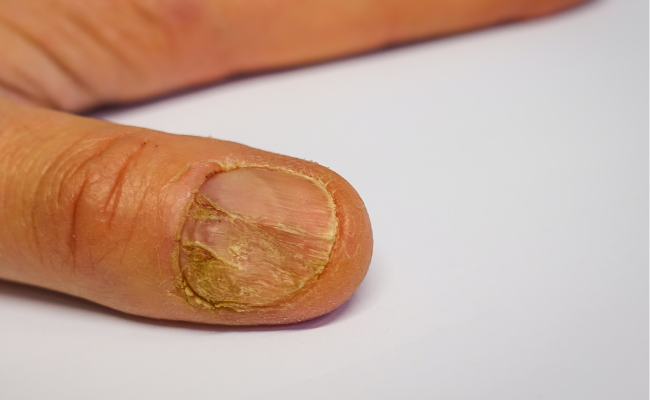How to Treat Nail Patella Syndrome?
- October 06, 2023
- No Comments

What is Nail Patella Syndrome?
Nail Patella Syndrome (NPS), also known as hereditary osteo-onychodysplasia, is a rare genetic disorder that primarily impacts the nails, knees, elbows, and pelvis. It arises from mutations in the LMX1B gene and is characterized by abnormalities such as underdeveloped or missing kneecaps, triangular lunulae (the white crescent-shaped area of the nail), and additional skeletal and renal irregularities. This uncommon genetic condition typically becomes apparent at birth or in early childhood, showcasing a distinctive clinical tetrad of fingernail dysplasia, patella hypoplasia or absence, iliac horns, and elbow deformities. Beyond these core manifestations, NPS exhibits complexity by involving the eyes, kidneys, and neurological system, creating a varied and intricate genetic disorder.
Why Does Nail Patella Syndrome Occur?
Nail Patella Syndrome is inherited in an autosomal dominant manner, meaning an affected individual has a 50% chance of passing the condition to their offspring. The LMX1B gene mutations disrupt the normal development of various tissues during fetal growth, leading to the characteristic features of NPS.
How Does Nail Patella Syndrome Progress?
The symptoms of Nail Patella Syndrome can vary widely among affected individuals. While some may experience only mild manifestations, others may face more severe complications, including joint issues, kidney problems, and eye abnormalities. The condition is typically present from birth and can persist throughout a person's life.
Treatment Solutions for Nail Patella Syndrome
Orthopedic Management:
- Physical Therapy: Physical therapy plays a crucial role in managing the musculoskeletal aspects of Nail Patella Syndrome. It focuses on improving joint function, muscle strength, and flexibility. Specific exercises can help individuals cope with joint abnormalities and enhance their overall mobility.
- Orthopedic Devices: In some cases, orthopedic devices such as braces or splints may be recommended to provide support and stability to affected joints, especially in the knees and elbows.
Renal Monitoring:
- Regular Kidney Check-ups: Given the potential renal complications associated with Nail Patella Syndrome, regular monitoring of kidney function is essential. This may involve urine tests, blood tests, and imaging studies to assess kidney health and detect any issues early on.
Surgical Interventions:
- Orthopedic Surgeries: In severe cases where joint abnormalities significantly affect mobility and quality of life, orthopedic surgeries may be considered. This can include procedures to address issues with the kneecaps or other affected joints.
- Kidney Transplant: If kidney function becomes severely compromised, a kidney transplant may be necessary. Close monitoring and early intervention can help manage kidney-related complications.
Pain Management:
- Medications: Pain management strategies, including the use of medications, may be employed to alleviate discomfort associated with joint issues. Nonsteroidal anti-inflammatory drugs (NSAIDs) or other pain relievers may be prescribed based on individual needs.
Benefit Points of Treating Nail Patella Syndrome
- Improved Mobility: Successful orthopedic management and, if needed, surgical interventions can significantly improve joint function and mobility, enhancing the overall quality of life for individuals with Nail Patella Syndrome.
- Prevention of Complications: Early and consistent monitoring, especially in relation to renal health, can help prevent or manage complications associated with Nail Patella Syndrome. Timely interventions contribute to better outcomes and overall health.
- Enhanced Quality of Life: Comprehensive treatment approaches address both the musculoskeletal and systemic aspects of Nail Patella Syndrome, leading to an improved quality of life for affected individuals.
- Pain Relief: Pain management strategies and medications can provide relief from discomfort associated with joint abnormalities, allowing individuals to engage in daily activities more comfortably.
Comments (0)